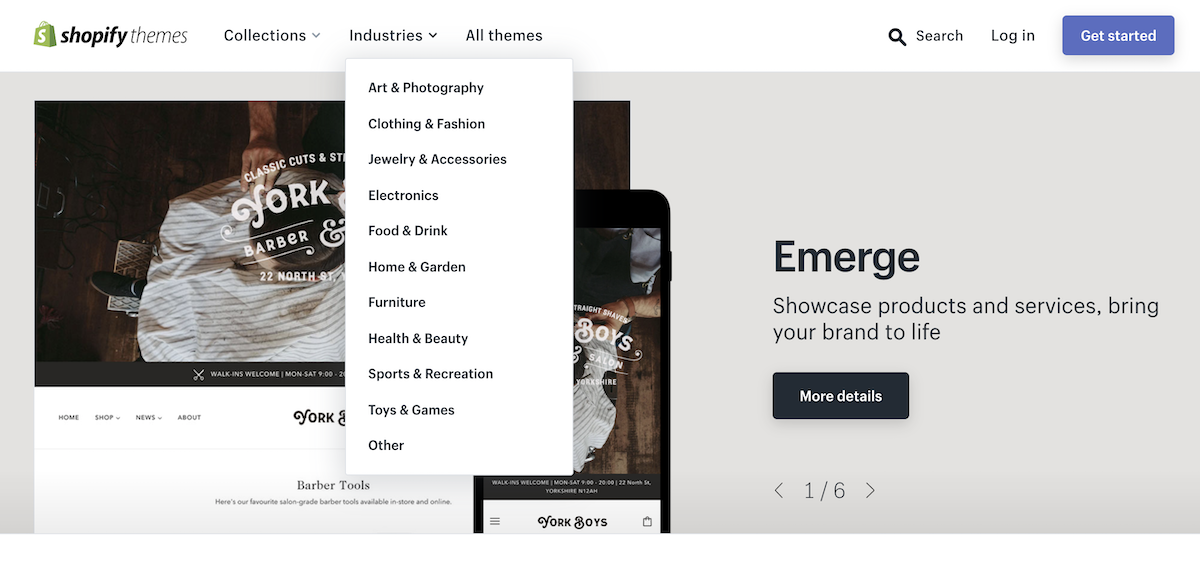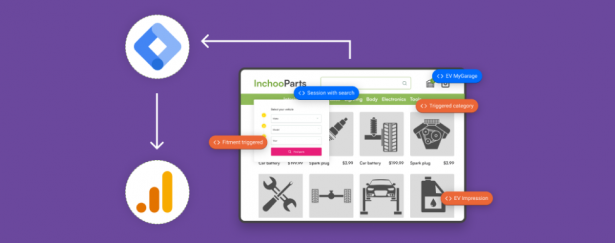Choose the best eCommerce platform for auto parts

What is the best eCommerce platform for automotive industry? How to find the one that meets your needs? What is more important – time to market, ease of use, customizability? How can you be sure you made a good decision? And why don’t you just use Amazon instead?
Read on to find out how to choose the best platform for your business and download our automotive marketing success guide.
If you don’t want to limit yourself to offering your products on Amazon and eBay (or other marketplaces), you probably want to consider opening up an online storefront of your own.
Choosing an eCommerce platform for your automotive aftermarket parts business is not an easy task. You want to find a solution that:
- is easy to use, for you and your customers
- can be customized
- performs well
- supports all the data you need to show
- ultimately – sells your products
With the abundance of eCommerce platforms on the market, are there some that fit the purpose better? You probably saw the old dilemma of going with SaaS or open-source. We cover that topic right away, just below this section.
Additionally, the aftermarket parts industry is so huge that there are players who have created their own proprietary software solutions. You, as a small business, can use those services to open an eCommerce channel in a different way. We’ll cover them as well a bit later.
But now – the old battle – SaaS vs open-source.
SaaS eCommerce platforms for auto parts
Shopify has certainly made a dent (or a black hole to be more accurate) in the eCommerce universe ever since it appeared. They are a great product for many small businesses, and for some larger ones as well. However, they are simply not suited for the intricacies and nuances often needed for serious automotive aftermarket business needs.
It’s sufficient to say they don’t even feature “Automotive” as an industry on their themes marketplace. And finding the right theme is a very important part of the process of starting a store on Shopify.

BigCommerce also has some examples of automotive businesses using their solution to share. However, they too are simply not created with those businesses in mind.
Don’t get me wrong, both BigCommerce and Shopify can work in some use cases. But, for the majority of businesses in this industry, they are missing important pieces here and there.
Open-source eCommerce platforms for auto parts
Open source solutions sound like something that solves the challenges and restrictions of SaaS, right? Well, yes and no. You can certainly accomplish a lot more with an open-source platform, however sometimes it can be hit and miss when it comes to the selection of a good platform and, more importantly, good partners to work with.

Divante recently published a list of all serious open-source platforms out there. You should check that out, and out of those, Magento and WooCommerce stand out in two areas:
- features/extendability and
- global community
All others are either gaining or losing ground, and there are very serious contenders coming up, with the likes of Shopware and Sylius. These two are both using a modern tech stack and have great customizability potential. However, let’s focus on Magento and WooCommerce for a while here.
Magento and WooCommerce
Magento is the most robust platform out there, and it already comes with a number of features that an auto parts and accessories store would need. However, its biggest strength is in the ecosystem. There are hundreds of use cases and ready-made solutions that can help you kick-start the project.
Year-Make-Model filters, My Garage vehicle selector, Parts diagrams, integrations with TecDoc and other databases. All of this is possible or has already been achieved, and you can easily get access to that vast know-how of the global ecosystem and solution partnes.
Yes, there are custom requirements with every business, but in most cases you won’t need to reinvent the wheel. This is because you can find exactly those partners that have a proven track record. Those partners also have experience with different 3rd party extensions and their pros and cons and can help you make good decisions throughout the project.

WooCommerce is a beginner-friendly open-source eCommerce solution for businesses. To be more accurate, it’s a plugin for WordPress, rather than a full-fledged platform. And while Magento offers more features, and in general is geared towards more complex businesses (small and mid-sized), WooCommerce can be a great option for those just starting out, as it is much simpler to set up and start using.
You can also achieve a lot of the custom things you could also accomplish with Magento, however, you still need the same level of experienced support to achieve the workflows needed, and for the store to perform well. I’d even say that with WooCommerce it can be a little more challenging to find high-quality partners who can cover all areas and support you beyond the website development.
Proprietary eCommerce solutions
There are some niche marketplaces and solutions that are catering to some businesses that don’t really want to spend too much time around their stores, and prefer to outsource as much of the operations as possible to a 3rd party. Some are working directly with OEM parts distributors and offer solutions for those businesses, some are closer to aftermarket workflows.
Some such solutions are:
You can take a look at a longer list of such solutions here. This may be a good option for you, however, owning your eCommerce website gives you a lot of advantages if you’re looking to have as much control over growth as you can.

What questions to ask when selecting the right fit?
Now, these are some of the options you have to choose from. But, how do you do that? Here’s a list of useful questions to go over with the software vendor (or an agency pitching that particular software):
- What can I customize, and what is “locked” with your solution?
- Are there any limitations to products, categories, any data I can use?
- Can I integrate with outside systems and how?
- How much does it cost to use your solution?
- Do you have preferred integrators of your solution to recommend?
- Can you show me the examples of websites in my industry built on your solution?
And if you are looking for questions to ask your potential web development partner in the process, you should check this list we prepared earlier.
Here is also a very useful short video by TJ Gamble of Jamersan, who touches on the topic of data standardization and parts fitment, and their implications on the selection of an eCommerce platform.
What’s next?
I hope this overview was useful and that it will help you compare among different platforms to make a decision. And we’re here to help! Let us know if you’re still having doubts about how to choose the best eCommerce solution for your automotive parts business, we’ll be happy to start the conversation!
Want more useful content like this? Download our FREE automotive aftermarket eCommerce success guide!
Hopefully, you got some useful insights into selecting a quality platform to support your business. And if you want to get a bigger picture of what it takes to create and manage a successful automotive aftermarket eCommerce website, you can start right here.
We’ve gathered our experience and industry knowledge gained over the years of working with merchants in the automotive aftermarket business. And now, we have prepared a useful guide to help you steer your way to success.
Visit this page and download our Automotive eCommerce Success Guide to get started.



1 comment
Wow!! Great post. Thanks for sharing this Blog here with us.